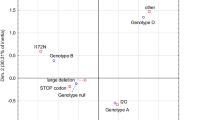Abstract
Here we report for the first time the results of the molecular study of 17 unrelated patients with salt-wasting (SW) congenital adrenal hyperplasia (CAH) belonging to a Sicilian ethnic group, as corroborated by patients’ pedigree taken to include 2 generations in the paternal and maternal lineage. The aim of this report was to confirm that genetic basis of CAH may be characterized by population differences. In our series, the overall predominant mutation was IVS2A/C>G, that was detected in 50% of alleles and in 58.8% of patients. The allelic and homozygous frequencies of IVS2A/C>G, Del8bpE3, and R356W mutations were significantly higher in our series than in other populations. Our study population included 2 cases with 2 different mutations that have been recently reported for the first time, 3 cases with a double mutation on the same allele, and 1 case with homozygous de novo mutation. We concluded that: a) in a Sicilian ethnic group the most frequent genotype in SW CAH is IVS2A/C>G homozygocity; b) surprisingly Del8bpE3 and R256W homozygocity are also well represented.
Similar content being viewed by others
References
Wilson RC, Mercado AB, Cheng KC, New MI. Steroid 21-hydroxy-lase deficiency: genotype may not predict phenotype. J Clin Endocrinol Metab 1995, 80: 2322–9.
Krone N, Braun A, Roscher AA, Knorr D, Schwarz HP. Predicting phenotype in steroid 21-hydroxylase deficiency? Comprehensive genotyping in 155 unrelated, well-defined patients from southern Germany. J Clin Endocrinol Metab 2000, 85: 1059–65.
Wilson RC, Nimkarn S, Dumic M, et al. Ethnic-specific distribution of mutations in 716 patients with congenital adrenal hyperplasia owing to 21-hydroxylase deficiency. Mol Genet Metab 2007, 90: 414–21.
Wasniewska M, Di Pasquale G, Rulli I, et al. In Sicilian ethnic group non-classical congenital adrenal hyperplasia is frequently associated with a very mild genotype. J Endocrinol Invest 2007, 30: 181–5.
White PC, Speiser PW. Congenital adrenal hyperplasia due to 21-hydroxylase deficiency. Endocr Rev 2000, 21: 245–91.
Balsamo A, Cacciari E, Baldazzi L, et al. CYP21 analisis and phenotype/genotype relationship in the screened population of the Italian Emilia-Romagna region. Clin Endocrinol (Oxf) 2000, 53: 117–25.
Dolzan V, Sólyom J, Fekete G, et al. Mutational spectrum of steroid 21-hydroxylase and the genotype-phenotype association in Middle European patients with congenital adrenal hyperplasia. Eur J Endocrinol 2005, 153: 99–106.
Dracopoulou-Vabouli M, Maniati-Christidi M, Dacou-Voutetakis C. The spectrum of molecular defects of the CYP21 Gene in the Hellenic population: variable concordance between genotype and phenotype in the different forms of congenital adrenal hyperplasia. J Clin Endocrinol Metab 2001, 86: 2845–8.
Grigorescu Sido A, Weber MM, Grigorescu Sido P, Clausmeyer S, Heinrich U, Schulze E. 21-hydroxylase and 11 β-hydroxylase mutations in Romanian patients with classic congenital adrenal hyperplasia. J Clin Endocrinol Metab 2005, 90: 5769–73.
Pinto G, Tardy V, Trivin C, et al. Follow-up of 68 children with congenital adrenal hyperplasia due to 21-hydrxylase deficiency: relevance of genotype for management. J Clin Endocrinol Metab 2003, 88: 2624–33.
Stikkelbroeck NM, Hoefsloot LH, De Wijs IJ, Otten BJ, Hermus AR, Sistermans EA. CYP21 gene mutation analysis in 198 patients with 21-hydroxlase deficiency in the Netherlands: six novel mutations ad a specific cluster of four mutations. J Clin Endocrinol Metab 2003, 88: 3852–9.
Kharrat M, Tardy V, M’Rad R, et al. Molecular genetic analysis of Tunisian patients with a classic form of 21-hydroxylase deficiency: identification of four novel mutations and high prevalence of Q318X mutation. J Clin Endocrinol Metab 2004, 89: 368–74.
Vakili R, Baradaran-Heravi A, Barid-Fatehi B, Gholamin M, Ghaemi N, Abbaszadegan MR. Molecular analysis of the CYP21 gene and prenatal diagnosis in families with 21-hydroxylase deficiency in northeastern Iran. Horm Res 2005, 63: 119–24.
Di Pasquale G, Wasniewska M, Caruso M, et al. Salt wasting phenotype in a compound heterozygous girl with P482S mutation associated with a novel mutation of CYP21 gene (Q481P). J Endocrinol Invest 2005, 28: 1038–9.
Di Pasquale L, Indovina S, Wasniewska M, et al. Novel nonsense mutation (W22X) in CYP21A2 gene causing salt-wasting congenital adrenal hyperplasia in a compound heterozygous girl. J Endocrinol Invest 2007, 30: 806–7.
Barbaro M, Lajic S, Baldazzi L, et al. Functional analysis of two recurrent amino acid substitutions in the CYP21gene from Italian patients with congenital adrenal hyperplasia. J Clin Endocrinol Metab 2004, 89: 2402–7.
Lajic S, Wedell A. An intron 1 splice mutation and a nonsense mutation (W23X) in CYP21 causing severe congenital adrenal hyperplasia. Hum Genet 1996, 98: 182–4.
Porzio O, Cunsolo V, Malaponti M, et al. Divergent phenotype of two siblings human leukocyte antigen identical, affected by non-classical and classical congenital adrenal hyperplasia caused by 21-hydroxylas deficiency. J Clin Endocrinol Metab 2006, 91: 4510–3.
López-Gutiérrez AU, Riba L, Ordonez-Sanchez ML, Ramírez-Jiménez S, Cerrillo-Hinojosa M, Tusié-Luna MT. Uniparental disomy for chromosome 6 results in steroid 21-hydroxylase deficiency: evidence of different genetic mechanisms involved in the production of the disease. J Med Genet 1998, 35: 1014–9.
Author information
Authors and Affiliations
Corresponding author
Rights and permissions
About this article
Cite this article
Wasniewska, M., Caruso, M., Indovina, S. et al. Salt-wasting congenital adrenal hyperplasia: Genotypical peculiarities in a Sicilian ethnic group. J Endocrinol Invest 31, 607–609 (2008). https://doi.org/10.1007/BF03345610
Accepted:
Published:
Issue Date:
DOI: https://doi.org/10.1007/BF03345610




